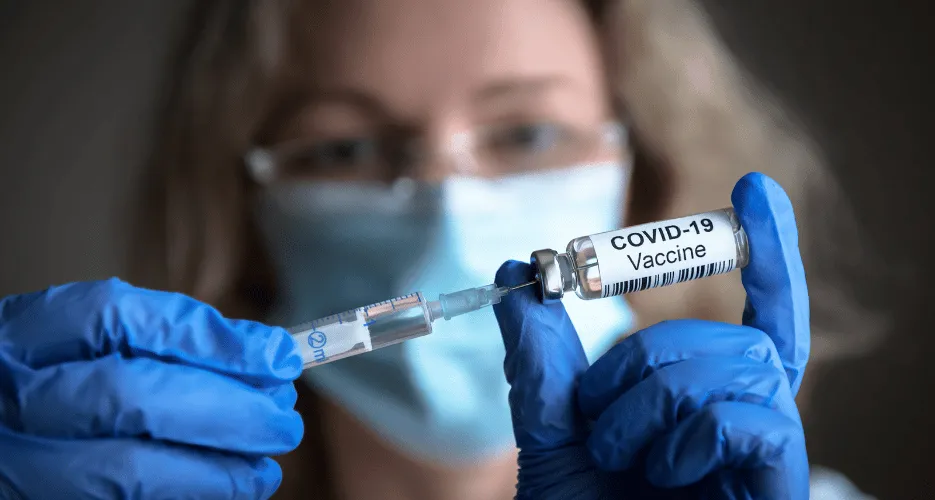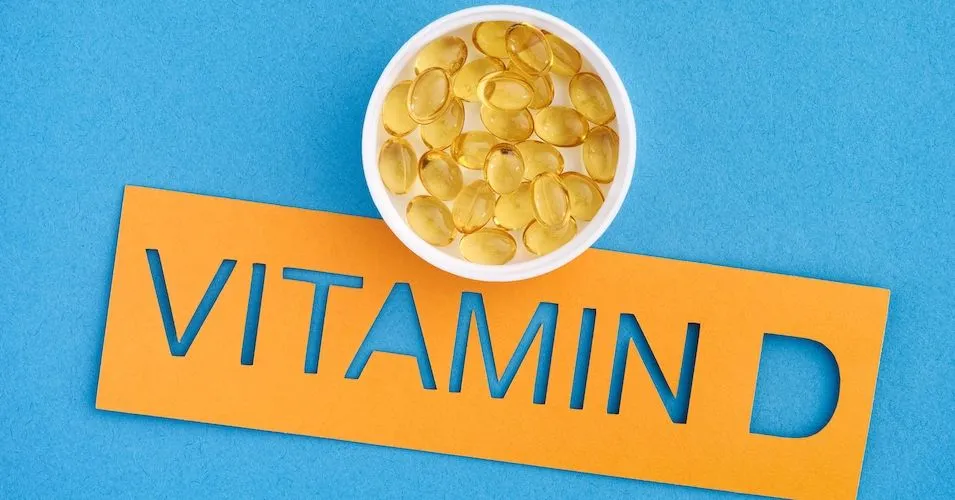Flu and Covid Vaccines: Should You Bundle Your Shots This Season?

It's that time of year again—flu season. We want to ensure that you and your loved ones stay safe during this period. Many myeloma patients and caregivers may be asking themselves, "Should I get my flu vaccine and COVID booster at the same time, or should I space them out?"
To address this question, we decided to investigate further. Remember, the right decision is the one made by you and your care team. This article's purpose is to inform you about recent research in this area.
Special Considerations for Myeloma Patients
Due to the biology of myeloma, we know the ultimate priorities are to keep myeloma lab numbers down and controlled while maintaining a safe immune system.
Let’s brush up a bit on why it is important to keep myeloma patients’ immune systems safe. Multiple myeloma is a cancer that disrupts plasma cells, which are extremely important for antibody protection (learn more here), thus heightening the risk of infection.
Due to having a suppressed immune system, timely vaccinations are even more important. However, because of unique immune responses, myeloma patients and their caregivers should carefully weigh the benefits and slight risks of co-administering the flu and COVID-19 vaccines.
Why Co-Administration May Be Beneficial
The Advisory Committee on Immunization Practices (ACIP) supports flu and COVID-19 co-administration as minor side effects were resolved quickly.
In fact, administering both vaccines together simplifies the process and reduces the need for multiple healthcare visits. Fewer trips mean less exposure, which is invaluable for immunocompromised patients. In addition, this method decreases the chances of forgetting or pushing the latter vaccination off.
Eligibility Criteria for Co-administration in Myeloma Patients
If you are eligible to receive both flu and COVID-19 vaccinations during one visit, this combination could minimize environmental safety risks. Eligibility typically includes individuals in stable health with no recent fever, active infections, or history of severe allergic reactions to either vaccine.
However, those who recently had COVID-19 (within three months of a planned booster), are currently facing an infection or fever, or have a known allergy to vaccine components may need to separate their vaccinations for added safety.
It's worth noting that while receiving both vaccines simultaneously is generally recommended, one should consider potential risks. Although early data indicates promising safety for co-administration, the side effects a patient might experience are worth discussing.
Reactions to Co-administration
Reactions have been seen when the two vaccines are taken together but these side effects or reactions are not common. One recent study, Reactogenicity of Simultaneous COVID-19 mRNA Booster and Influenza Vaccination in the US, provides key insights into the side effects with co-administration. The findings reported an 8% (Pfizer-BioNTech) and 11% (Moderna) increase in systemic reactions such as fatigue, headache, and muscle aches. However, these reactions were typically mild and self-resolving.
Temporary rises in light chains lab values in myeloma patients after double administration of the flu and COVID-19 vaccines have also been noted, but formal studies on this temporary rise are needed.
Referencing this temporary rise in light chains, Dr. Brian G.M. Durie from the International Myeloma Foundation shares, “We have seen some increases in immunoglobulin levels, free light chain levels, and occasional, very light trace increase in myeloma protein levels following the vaccination. However, those have subsided, and absolutely no indication of [myeloma] progression at this time.”
For patients who may be understandably cautious about potential side effects or reactions, it is possible to receive the vaccinations a week apart as a practical option to help reduce the likelihood of adverse effects. This approach allows for closer monitoring of each vaccine’s impact, reassuring those with specific health considerations.
With all of this in mind, if they desire, myeloma patients should discuss co-administration of the vaccines with their healthcare team, as side effects like fatigue and soreness could temporarily affect quality of life post-vaccination, but the benefits could outweigh these risks.
Choosing the Flu Vaccine: Special Notes on Vaccine Adjuvants
Given the wide range of flu vaccine options now available, it's essential to make an informed choice and understand the different types and their unique components. New flu vaccines have been introduced, such as Fluad, which contain adjuvants (an element that increases immune response to antigens). As stated by the CDC, Fluad has been approved for those 65 years and older and or those who are receiving treatment that suppresses one’s immune system.
Though this technology is exciting, it is relatively new and should be discussed with your care team. They can be highly effective for older and immunocompromised patients, but if you are bundling the shots it may be worth opting for adjuvant-free options.
For those on maintenance therapy, choosing an appropriate flu vaccine with guidance from a healthcare provider is crucial to avoid overstimulating an already compromised immune system.
Next Steps
So, what's the verdict? Co-administration of the flu and COVID-19 vaccines is safe, and protecting yourself and your loved ones during this time of year is essential.
Personalized guidance from healthcare providers is critical in ensuring the right balance of protection and comfort. Whether vaccines are given together or spaced out, the key is consistent immunization to help reduce the risk of severe infections.
For more information on the coadministration of the flu and COVID-19 vaccines from the Center of Disease Control (CDC), refer to the following link: Getting a Flu Vaccine and other Recommended Vaccines at the Same Time | Influenza (Flu) | CDC
For more information on infection prevention, watch this HTU Guest Lecture Unit from Dr. Benjamin Derman:
Sources:
It's that time of year again—flu season. We want to ensure that you and your loved ones stay safe during this period. Many myeloma patients and caregivers may be asking themselves, "Should I get my flu vaccine and COVID booster at the same time, or should I space them out?"
To address this question, we decided to investigate further. Remember, the right decision is the one made by you and your care team. This article's purpose is to inform you about recent research in this area.
Special Considerations for Myeloma Patients
Due to the biology of myeloma, we know the ultimate priorities are to keep myeloma lab numbers down and controlled while maintaining a safe immune system.
Let’s brush up a bit on why it is important to keep myeloma patients’ immune systems safe. Multiple myeloma is a cancer that disrupts plasma cells, which are extremely important for antibody protection (learn more here), thus heightening the risk of infection.
Due to having a suppressed immune system, timely vaccinations are even more important. However, because of unique immune responses, myeloma patients and their caregivers should carefully weigh the benefits and slight risks of co-administering the flu and COVID-19 vaccines.
Why Co-Administration May Be Beneficial
The Advisory Committee on Immunization Practices (ACIP) supports flu and COVID-19 co-administration as minor side effects were resolved quickly.
In fact, administering both vaccines together simplifies the process and reduces the need for multiple healthcare visits. Fewer trips mean less exposure, which is invaluable for immunocompromised patients. In addition, this method decreases the chances of forgetting or pushing the latter vaccination off.
Eligibility Criteria for Co-administration in Myeloma Patients
If you are eligible to receive both flu and COVID-19 vaccinations during one visit, this combination could minimize environmental safety risks. Eligibility typically includes individuals in stable health with no recent fever, active infections, or history of severe allergic reactions to either vaccine.
However, those who recently had COVID-19 (within three months of a planned booster), are currently facing an infection or fever, or have a known allergy to vaccine components may need to separate their vaccinations for added safety.
It's worth noting that while receiving both vaccines simultaneously is generally recommended, one should consider potential risks. Although early data indicates promising safety for co-administration, the side effects a patient might experience are worth discussing.
Reactions to Co-administration
Reactions have been seen when the two vaccines are taken together but these side effects or reactions are not common. One recent study, Reactogenicity of Simultaneous COVID-19 mRNA Booster and Influenza Vaccination in the US, provides key insights into the side effects with co-administration. The findings reported an 8% (Pfizer-BioNTech) and 11% (Moderna) increase in systemic reactions such as fatigue, headache, and muscle aches. However, these reactions were typically mild and self-resolving.
Temporary rises in light chains lab values in myeloma patients after double administration of the flu and COVID-19 vaccines have also been noted, but formal studies on this temporary rise are needed.
Referencing this temporary rise in light chains, Dr. Brian G.M. Durie from the International Myeloma Foundation shares, “We have seen some increases in immunoglobulin levels, free light chain levels, and occasional, very light trace increase in myeloma protein levels following the vaccination. However, those have subsided, and absolutely no indication of [myeloma] progression at this time.”
For patients who may be understandably cautious about potential side effects or reactions, it is possible to receive the vaccinations a week apart as a practical option to help reduce the likelihood of adverse effects. This approach allows for closer monitoring of each vaccine’s impact, reassuring those with specific health considerations.
With all of this in mind, if they desire, myeloma patients should discuss co-administration of the vaccines with their healthcare team, as side effects like fatigue and soreness could temporarily affect quality of life post-vaccination, but the benefits could outweigh these risks.
Choosing the Flu Vaccine: Special Notes on Vaccine Adjuvants
Given the wide range of flu vaccine options now available, it's essential to make an informed choice and understand the different types and their unique components. New flu vaccines have been introduced, such as Fluad, which contain adjuvants (an element that increases immune response to antigens). As stated by the CDC, Fluad has been approved for those 65 years and older and or those who are receiving treatment that suppresses one’s immune system.
Though this technology is exciting, it is relatively new and should be discussed with your care team. They can be highly effective for older and immunocompromised patients, but if you are bundling the shots it may be worth opting for adjuvant-free options.
For those on maintenance therapy, choosing an appropriate flu vaccine with guidance from a healthcare provider is crucial to avoid overstimulating an already compromised immune system.
Next Steps
So, what's the verdict? Co-administration of the flu and COVID-19 vaccines is safe, and protecting yourself and your loved ones during this time of year is essential.
Personalized guidance from healthcare providers is critical in ensuring the right balance of protection and comfort. Whether vaccines are given together or spaced out, the key is consistent immunization to help reduce the risk of severe infections.
For more information on the coadministration of the flu and COVID-19 vaccines from the Center of Disease Control (CDC), refer to the following link: Getting a Flu Vaccine and other Recommended Vaccines at the Same Time | Influenza (Flu) | CDC
For more information on infection prevention, watch this HTU Guest Lecture Unit from Dr. Benjamin Derman:
Sources:

about the author
Taya Salman
Taya, a recent UC Berkeley graduate specializing in Molecular Cell Biology and Philosophy of Ethics, draws her intimate connection to multiple myeloma from a dear relative's recent diagnosis. Motivated by this personal experience, she relentlessly dives into extensive reading and research, aspiring to be an effective caregiver to her loved one and a valuable resource for the broader myeloma community. In addition to her advocacy, Taya enriches economically disadvantaged communities by tutoring students, fostering academic growth and potential. As an outdoor enthusiast, Taya cherishes hiking trips and family time, demonstrating her love for nature and strong family ties.
More on Navigating Your Health
Trending Articles
Get the latest thought leadership on your Chronic Lymphocytic Leukemia delivered straight to your inbox
Subscribe to the weekly newsletter for news, stories, clinical trial updates, and helpful resources and events with cancer experts.
Thanks to our HealthTree Community for Chronic Lymphocytic Leukemia Sponsors:















